“Why are you in Guatemala if you hate hot weather and humidity?”
“Because I want to see Mayan pyramids!”
It was an eternal struggle, one which I braved with all the courage and determination of someone who complained each and every step of the way. But I soldiered forth.
It’s a lot more than just the Mayan wonders, though. Guatemala has one of the most densely packed lists of things worth seeing anywhere in Latin America, from the must-visit, world-famous archaeological marvels of the Maya, to its pristine jungle reserves, endless hiking opportunities, and a mix of modern cities, colonial towns, and tiny villages, many with still-intact ancient traditions from long before the days of Columbus. You’d have a tough time finding a country with a more diverse range of activities, and, perhaps best of all, it’s pleasantly affordable.
So! Without further ado, here are ten of my favorite things from Guatemala, all of which I’d highly recommend if you ever get a chance to visit:
10 great things to do in Guatemala
1) Enjoy colonial Antigua
Say what you will about the conquistadors (and they were pretty terrible), but at least they had talented city planners. Antigua’s grid layout and logically-ordered street numbers are probably half the reason people come to visit.
But even beyond its easily-navigable avenues, it readily becomes clear why people end up staying here a lot longer than planned. The city itself may be short on magnificent architectural wonders, but its cobblestoned, colonial charm provides a perfect laid-back atmosphere for its visitors; the city is filled with expat-friendly bars, cheap restaurants, welcoming plazas, busy street markets, and even some modern-day amenities, such as fancy dessert places. The central plaza is a little touristy, but it’s easy enough to wander elsewhere, away from the souvenir shops, where you might find views like these:
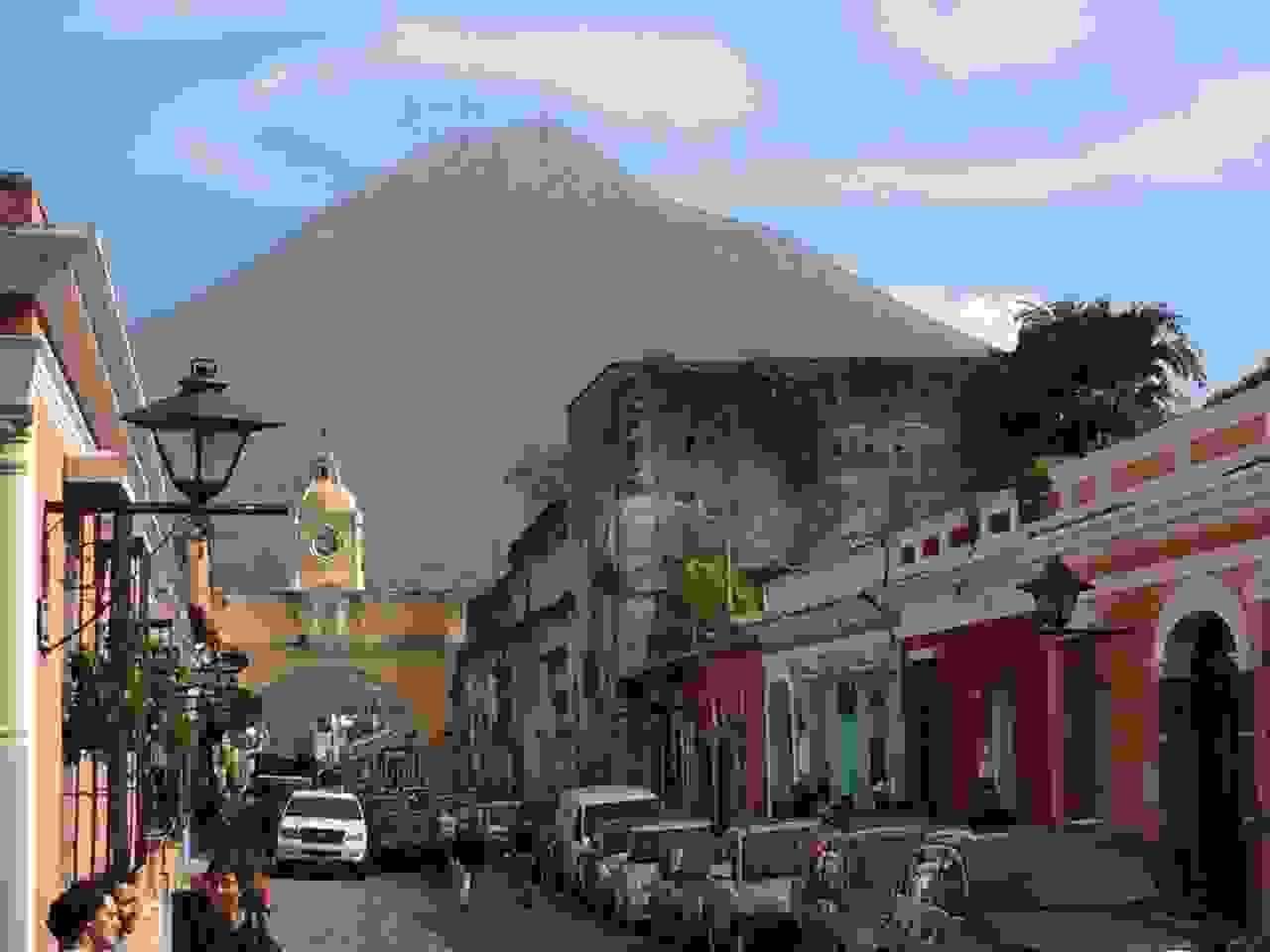
It’s one of the few cities in Guatemala that’s actually pretty, owing to its colonial heritage, whereas others you might visit suffer from modern urban sprawl. It tends to be why visitors go straight for Antigua when they arrive, skipping the capital altogether.
For the slightly more adventurous, there’s plenty to keep you busy around the city as well, with seemingly every hostel organizing cultural and outdoorsy excursions to all sorts of places nearby. Volcano hikes are quite popular, and even the more distant highland villages, market towns, and lakeside getaways could still be explored as day trips, if you’re an early riser. It’s a great base for exploring the region, as well as a comfortable place to come back to after a long day of sightseeing, which is part of what makes Antigua so enjoyable. Take a look here for a list of things to do in Antigua.
2) Admire Lake Atitlán (with caveats!)
Alright, so I’ll start by saying I found Atitlán to be somewhat overrated. It depends entirely on your choice of town, as each lakeside village has a distinct atmosphere (San Marcos is filled with hippies, and San Pedro is filled with aspiring alcoholics), as well as your daily itinerary…which could be spent exploring the nearby villages and mountains, or could be spent exploring Guatemala’s alcohol menu. Either way, most people who come here have a fun time. Just figure out which sort of fun you’d prefer, and make use of the opportunities at hand.
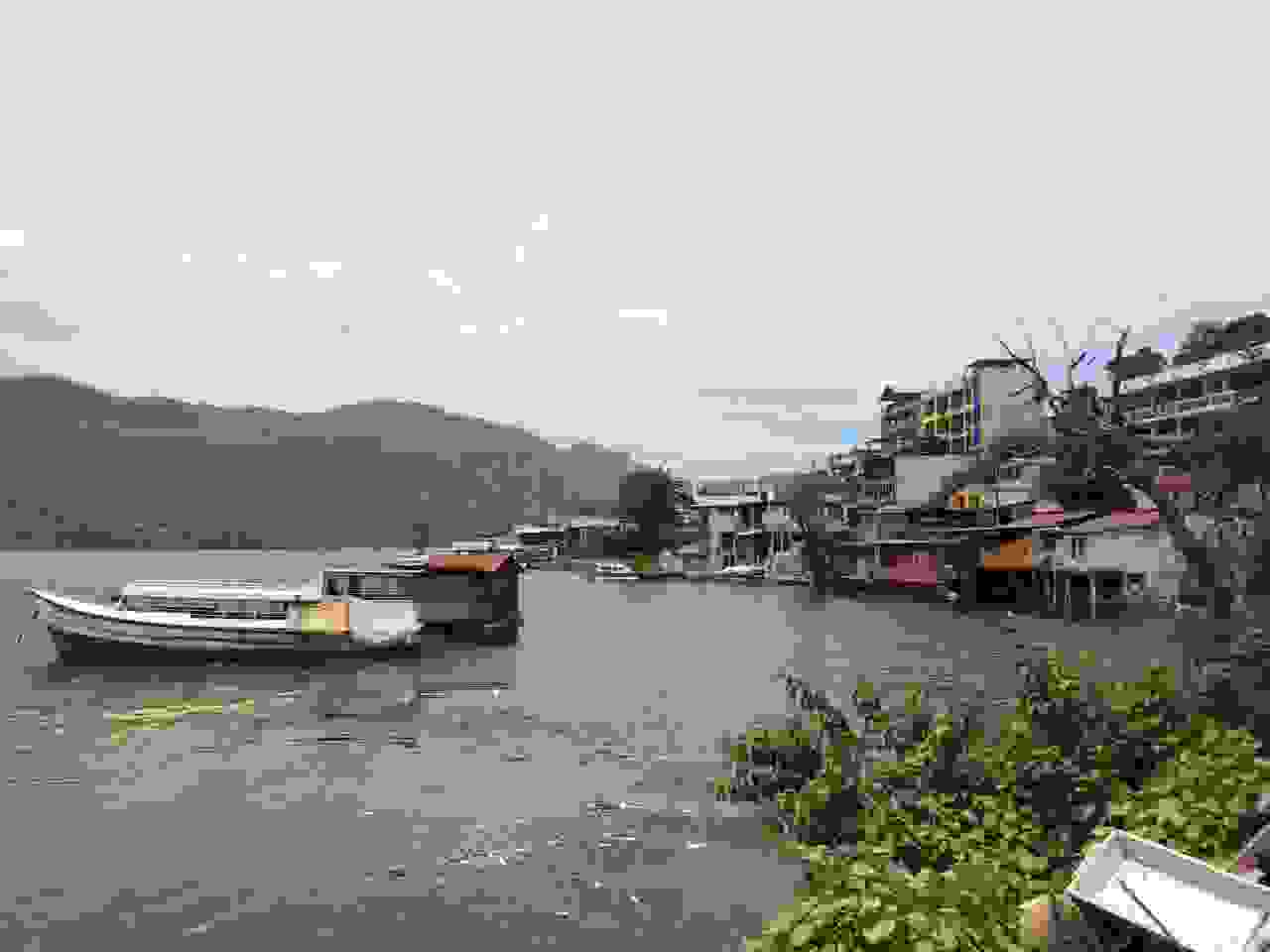
Boat trips can take you around to any of the lakeside villages, each of which has its own distinct indigenous cultural heritage, making them a pleasure to explore, as each town is different from its neighbor. It’s touristy, yes, but once you get away from the waterfront, it gets a lot more real. Busy street markets, richly embroidered traditional clothing, and pre-Colombian languages make it a great place to experience the non-colonial culture of the Maya who still populate the region.
Those mountains yearn to be explored, too. Tour groups operate all sorts of hikes, from serious excursions to lighter walks, and trekking up the mountains to catch the sunrise is a popular outdoorsy adventure for some of the more athletic visitors to Atitlán.
3) Explore the ancient Mayan ruins
“Epic” is a term that gets thrown around a lot these days, but trekking through the depths of the Central American jungle to emerge in a lost Mayan city is hard to describe as anything else. From millennia-old abandoned pyramids to the intricate carvings that adorn them, discovering the lost civilizations of the ancient Maya is not to be missed.
Tikal rightfully gets all the attention, being one of the most extensive Mayan cities ever discovered, whether in Guatemala or elsewhere; the central plaza is surrounded by entirely intact ancient pyramids, with dozens of other massive structures hidden among the forest. You could spend all day here, discovering one ancient monument after another, to the backdrop of toucans flying overhead and howler monkeys providing an ever-present musical backdrop.
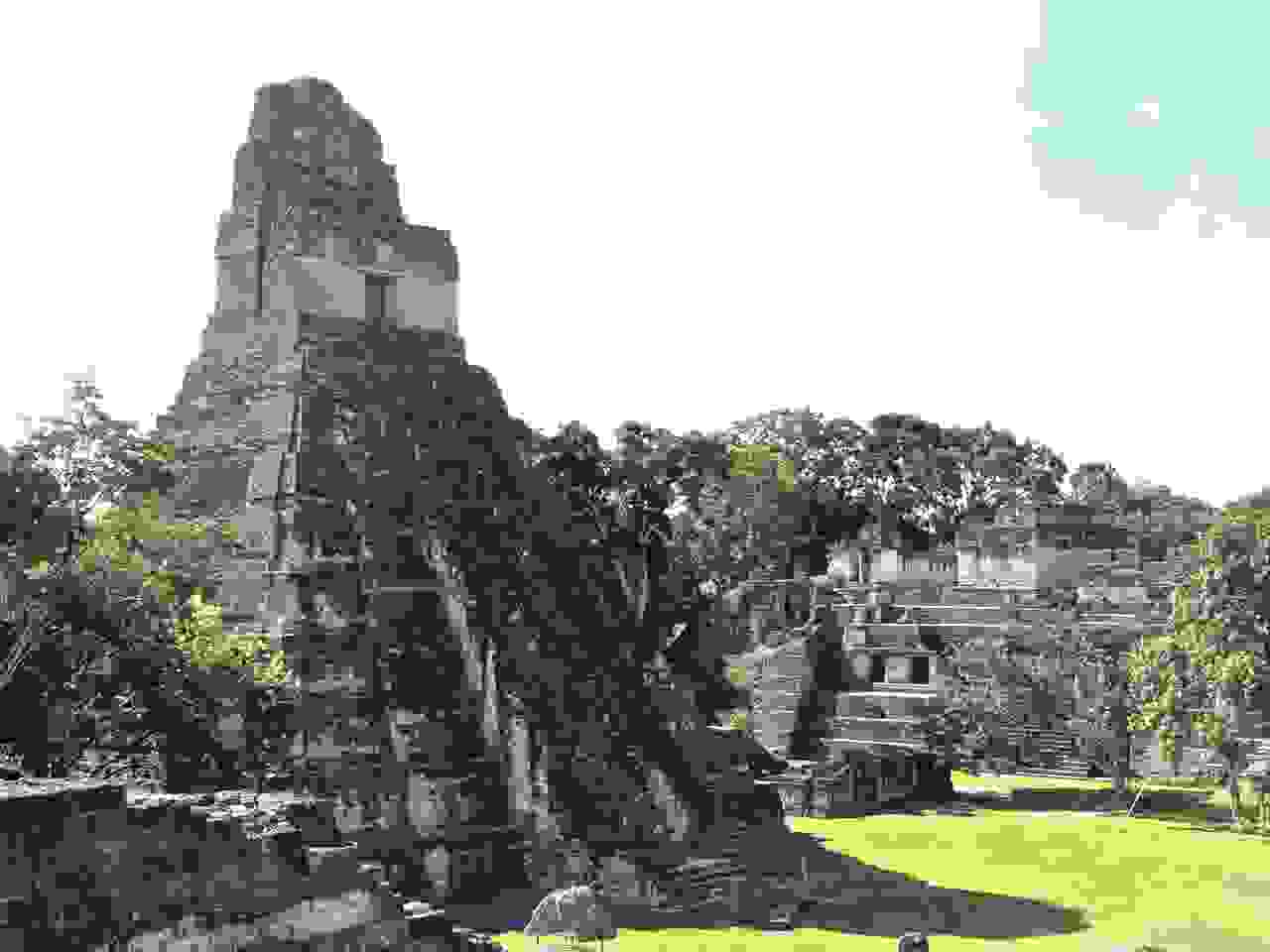
And compared to other world-famous lost ancient cities, particularly Machu Picchu, Tikal was shockingly empty, especially if you get up in time for the sunrise tour.
Beyond the main Mayan attraction, Guatemala is filled with literally hundreds of other ancient sites, which very few other tourists visit, or even know about. They won’t match Tikal in scale or grandeur, but they’ll make for interesting excursions for those eager to discover more of the pre-Colombian history of the region.
Some of the more accessible and picturesque sites include Yaxhá (close to Tikal), Iximche (near Antigua and Lake Atitlán), and Aguateca (partway between Antigua and Tikal). Many visitors to Guatemala hop over the border to Honduras to visit Copán, which is famous for its totem-like stone carvings.
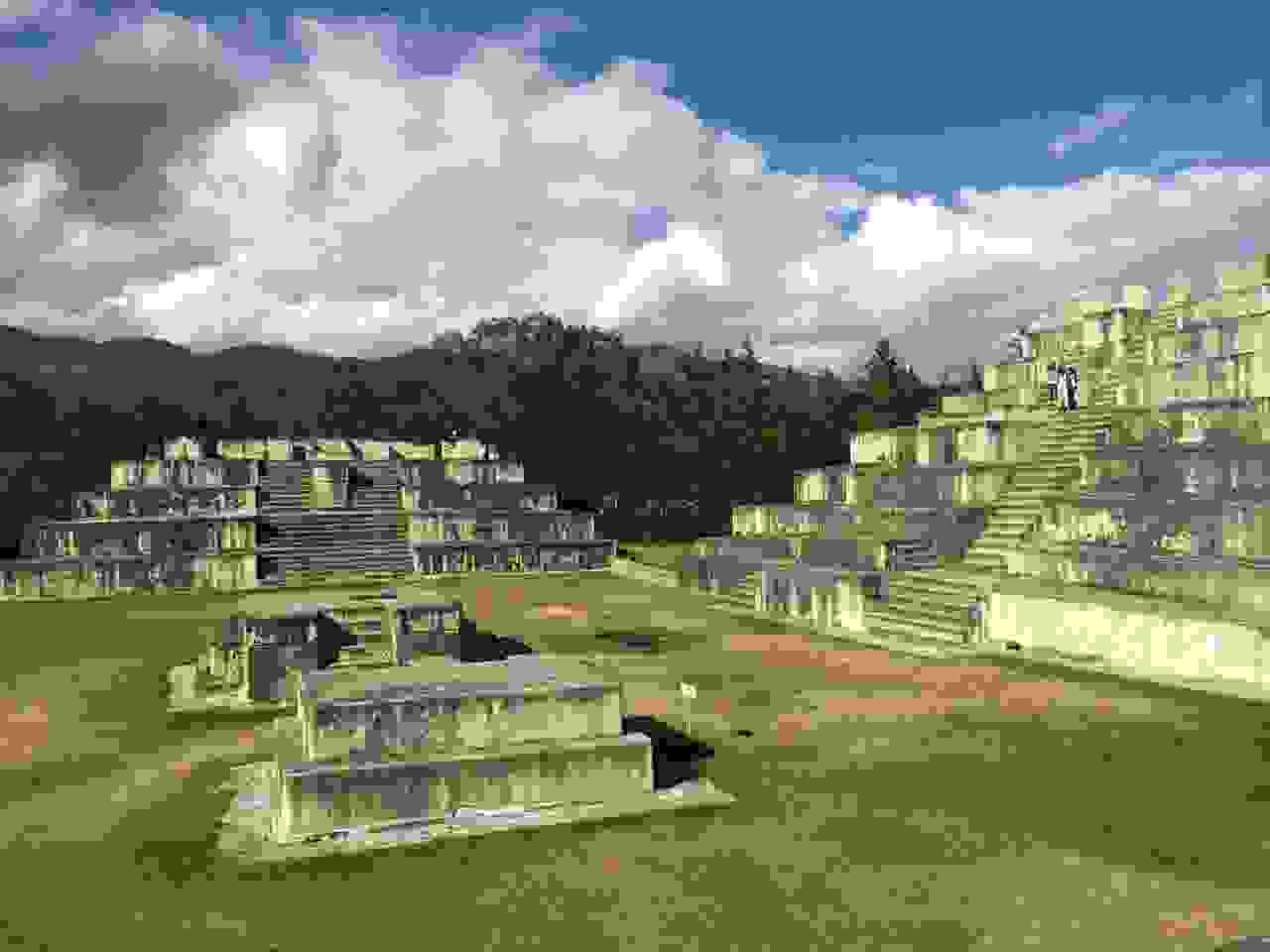
The semi-excavated site of El Mirador, far to the north of the country, is rumored to be even more impressive than Tikal, but still remains mostly overgrown with jungle, and accessible only by an intense, multi-day hike, or a pricey helicopter ride…but that might be just what you’re looking for.
To be honest, it’s easy to see why people go straight to Tikal, and skip the rest; Tikal is so massive and so well preserved that seeing another pyramid somewhere else after seeing a dozen at Tikal might seem redundant. But if you’re not in a hurry, or you’re a huge archaeology nerd, Guatemala’s ancient sites can keep you busy for quite some time.
4) Admire the natural wonders of Semuc Champey
Right after Tikal, Semuc Champey was at the top of my list for favorite places in Guatemala. Set deep in the jungle in what seems to be the middle of nowhere is a massive natural limestone formation covering an underground river, whose stepped swimming pools look like a giant tropical rice paddy:
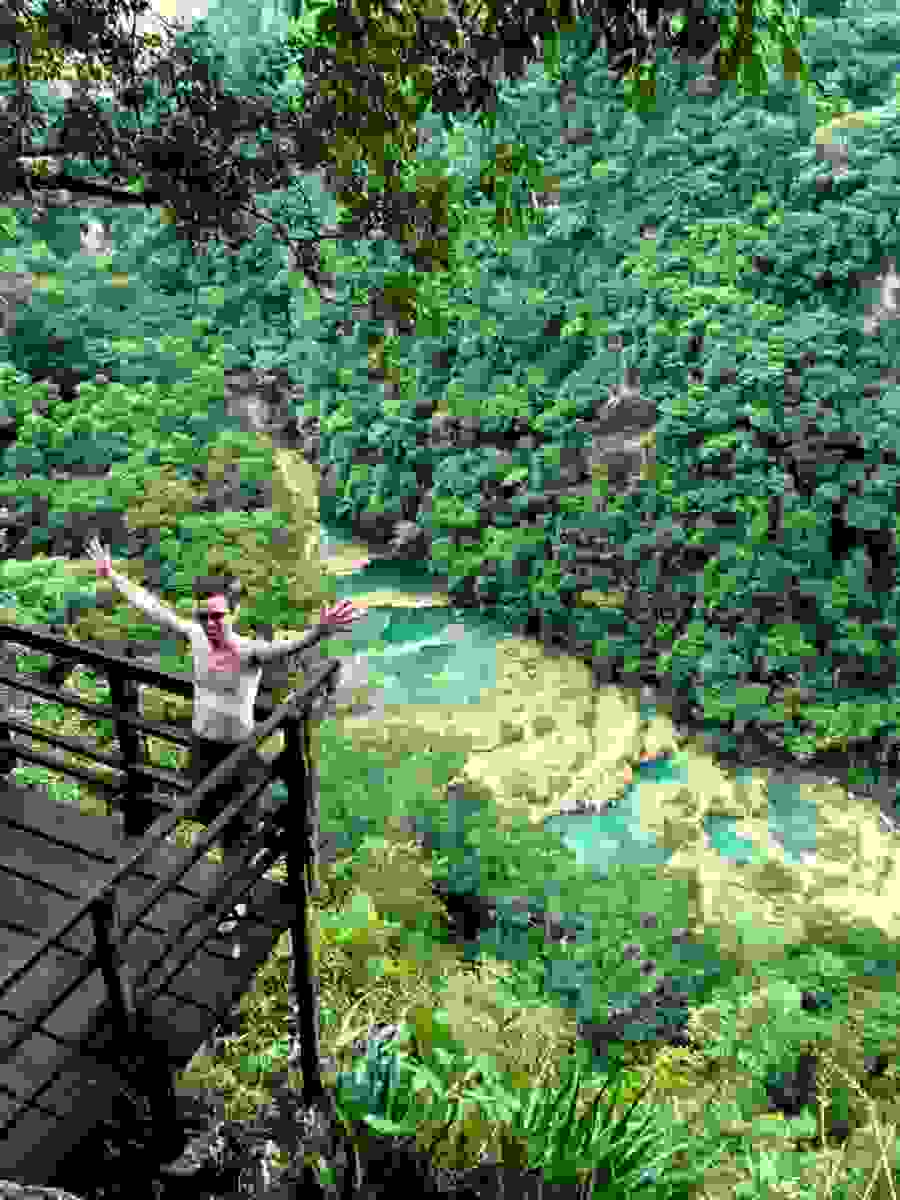
Accessible from the tiny nearby town of Lanquín, this once-obscure natural wonder is actually quite well managed, with hiking trails, lookout points, easy transportation, and plenty of guided tours to take you through the park. You can even stay inside the park itself in one of the lodges, if you really want to get away from civilization.
Aside from hiking and swimming, many tours will also take you to the Kan’Ba caves, a cavernous labyrinth where you’ll swim along an underground river, holding a candle above your head to light the way. Bridge jumps and rope swings are usually part of the itinerary as well, where local kids with excellent salesmanship skills will try to sell you a beer or two.
The isolated town actually has enough tourist-friendly comforts that you might stay a few extra days, particularly after the long, bumpy bus ride it takes to get here.
5) Roast marshmallows on volcanoes!
Guatemala is home to dozens of volcanoes, several of which remain active, where you can indeed roast marshmallows in the heat emanating from the summit:
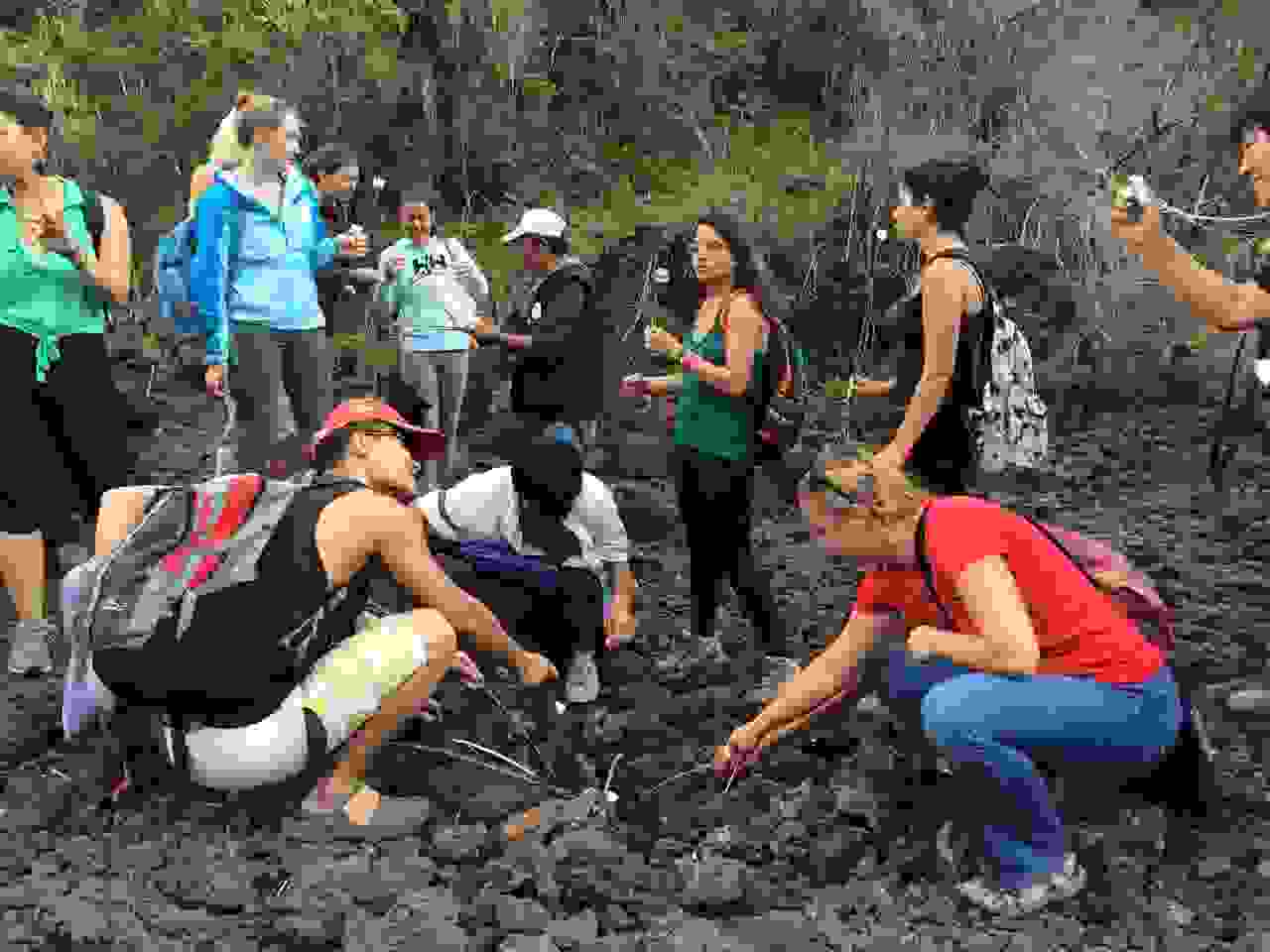
That’s Pacaya, one of the most accessible volcanoes in Guatemala. It’s just a few hours by bus from Antigua, and a short (but steep) hour and a half climb to the top, making it one of the most popular volcano hikes in the country. Even so, there were only a few dozen other hikers up at the summit.
Kids hang out at the park entrance to rent horses, and they’ll follow you up along the path, waiting for you to change your mind as you go. Sneaky geniuses.
Other volcanoes and mountains are clustered around the same region in the southwest of the country, around Atitlán and Xela, both of which make great bases for exploring the nearby mountains. Keep in mind the elevation will probably make everything twice as difficult, though.
6) Immerse yourself in traditional culture
This was another quiet, understated highlight of visiting Guatemala. Though I’ve been lucky enough to have visited quite a few places in the world, I’ve never visited a country where people still wear the clothing of the pre-Levi’s era, when jeans and t-shirts swept across the globe and turned the whole planet into a boring, homogenous fashion show. I certainly know of them, but this was the first time I saw any in person.
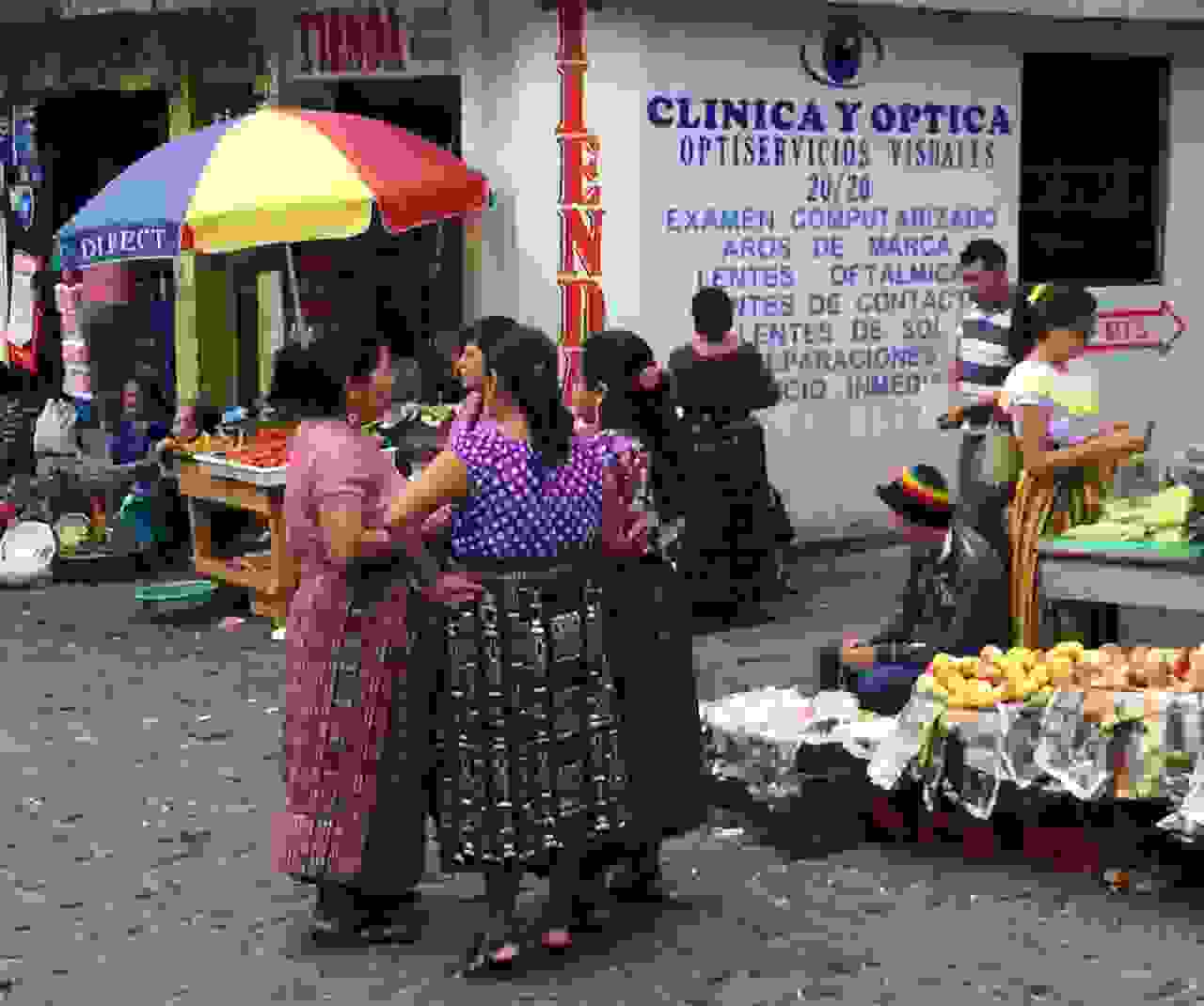
In many countries whose rich cultural heritage is a tourist draw, you’ll see people dressed up in traditional outfits, hanging around the tourist sites, selling souvenirs, or charging foreigners a small fee to take a picture with them. Maybe you’ll see an old lady genuinely dressed that way, still wearing the clothing she’s been wearing throughout her whole life. But in Guatemala, particularly in the highland towns in the west of the country, even teenagers dressed this way. In some places, everyone did.
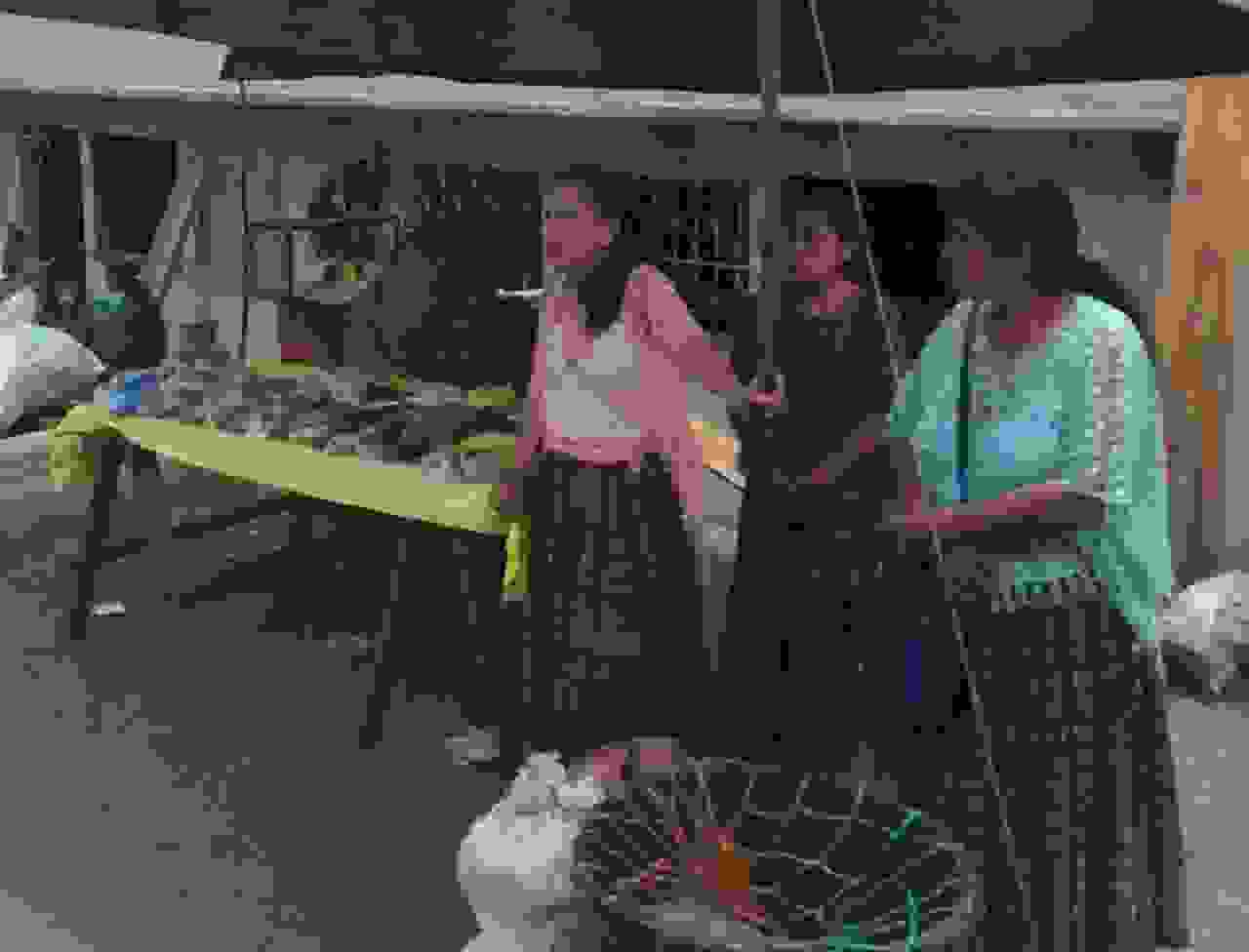
The outfit is known as a huipil, common throughout parts of Mexico and Central America, which existed before the arrival of the Europeans, and evolved to incorporate the skirt. And each town is different; the skirt is usually the same, but the blouse is totally different, even from one town to the next, making them an important part of Guatemalan cultural identity.
It’s mostly the women who still carry on with this tradition, perhaps because the women were the ones who spent the time making them, though in a few towns, such as Todos Santos Cuchumatán, it’s everyone. For now, anyway. Along with the still-spoken indigenous languages and ancient Mayan religious rituals, it was a real pleasure seeing pre-Colombian culture surviving after centuries of colonial rule and Western cultural dominance. Besides, they’re just full of pretty colors.
Though you’ll see this all over the country, the most obviously saturated areas are in the highlands in the western part of the country. Atitlán is a good place to visit several of these towns, as you can take comfy boat rides, instead of atrociously bumpy bus rides.
7) Lake Izabal, Rio Dulce, and Livingston
For a country packed with all sorts of things to see, it’s weird how certain corners of Guatemala languish in relative obscurity. Such was the case with Lake Izabal, the lesser-known lake that’s losing out to spotlight-hogging Atitlán.
Though oddly unknown on the main backpacker circuit, a few visitors do indeed make it over to Izabal, where you’ll find a massive lake (where you can actually swim, unlike the other one), a Spanish castle, a river cutting right through a vertical rock gorge, hot spring waterfalls, riverside eco-lodges, refreshingly lazy boat travel, jungle backdrops, and…well, that’s enough reason to visit, right? Right.
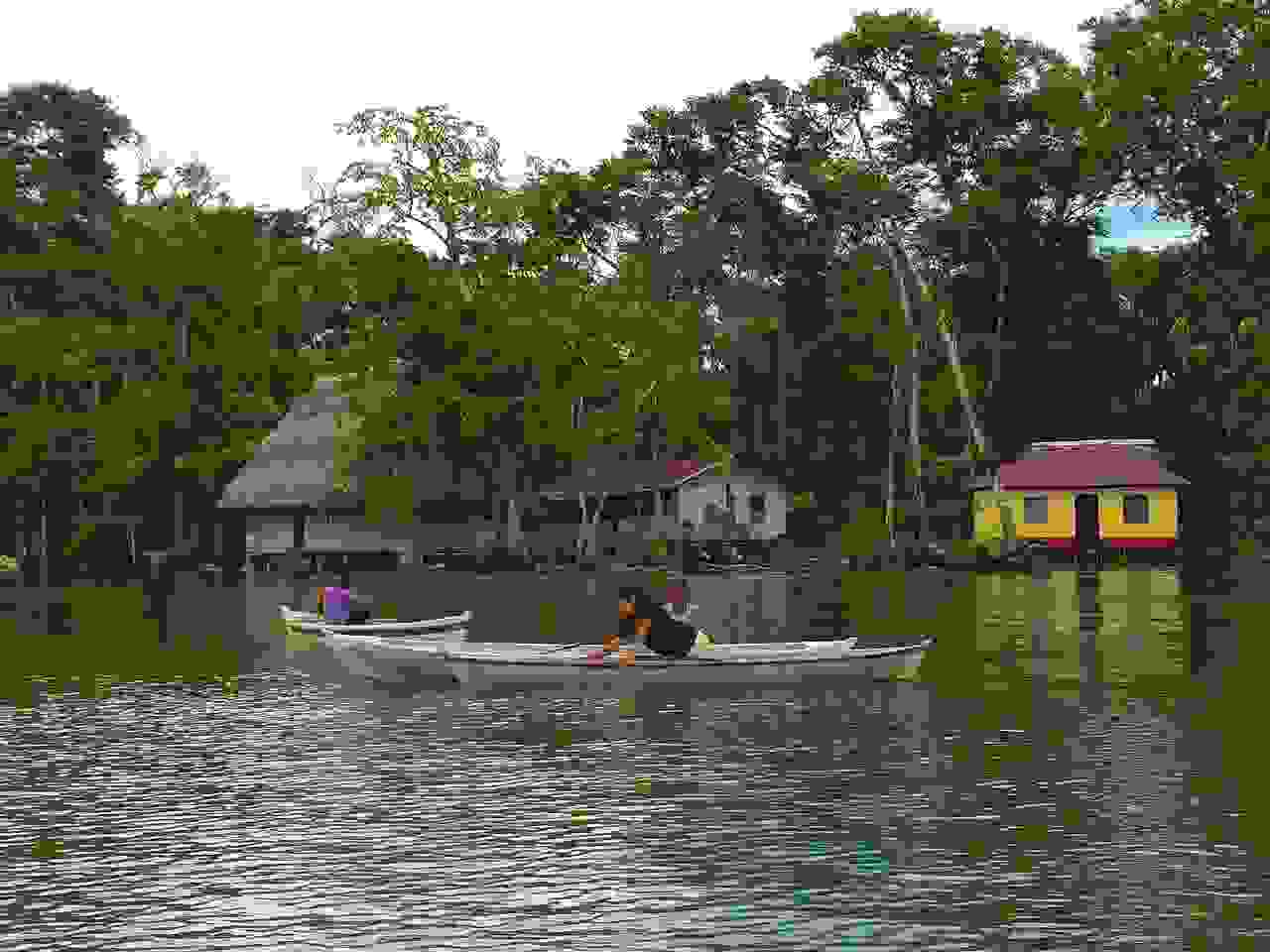
Because it’s lesser-known than some of the other attractions in Guatemala, it’s not nearly as developed. It doesn’t have the ever-present tour agencies offering daily activities of all sorts, making it somewhat of a logistical effort to visit all the places worth visiting in the region. I have a feeling it’ll become far more developed within the next decade or so, because it has plenty to offer, but even if you find yourself out here without much to do, it’s quite a nice place to escape to.
Lake Izabal leads onward to the Rio Dulce, a snaking river flanked by a massive gorge, which takes you out to the sea, and the culturally distinct enclave of Livingston; it’s an isolated peninsula town, accessible only by boat, and populated mostly by African refugees. They’ve carved out quite a unique little corner of the world, different from anything else in Guatemala, making it a memorable highlight along the way through the country. Oh, and their seafood is great too.

8) Visit the mountaineer’s paradise of Xela
Alright, so I’ll admit that by the time I got here, I was far too exhausted to do anything besides hang out in the city and visit the English-language used bookstore. But other people have all sorts of outdoorsy fun here. And you can too!

Xela, also known by its rarely-used official name of Quetzaltenango, is a perfect base for multi-day mountain excursions, hot spring relaxation trips, and volcano hikes. Keep in mind you’ll be up at a higher elevation than you might be used to, so you might need some time to adjust. Or I’m just lazy.
The city itself is the second largest in Guatemala, with a decidedly non-touristy atmosphere, and none of the creepy, awkward reputation of the capital. Xela is modern and lively, with bustling plazas during the day, and a nightlife that seemingly exists without the need for foreign cash. You can walk around all day without anyone trying to sell you anything, which is a nice change of pace from some of the more touristy places.
9) Enter the jungle
Guatemala is covered in vast swathes of pristine wilderness, which is how it managed to hide so many ancient Mayan cities for so long. And although deforestation is a continual problem, massive jungle reserves remain.
You’ll probably end up on a jungle tour simply by virtue of visiting any of the Mayan ruins; Tikal, for example, is surrounded by jungle, and filled with monkeys, toucans, and other wildlife. Many of the other Mayan sites are similarly hidden away, covered in forest. The aforementioned El Mirador, tucked away at the end of a multi-day sweaty jungle trek, is much more of a jungle adventure than a Mayan pyramid tour.
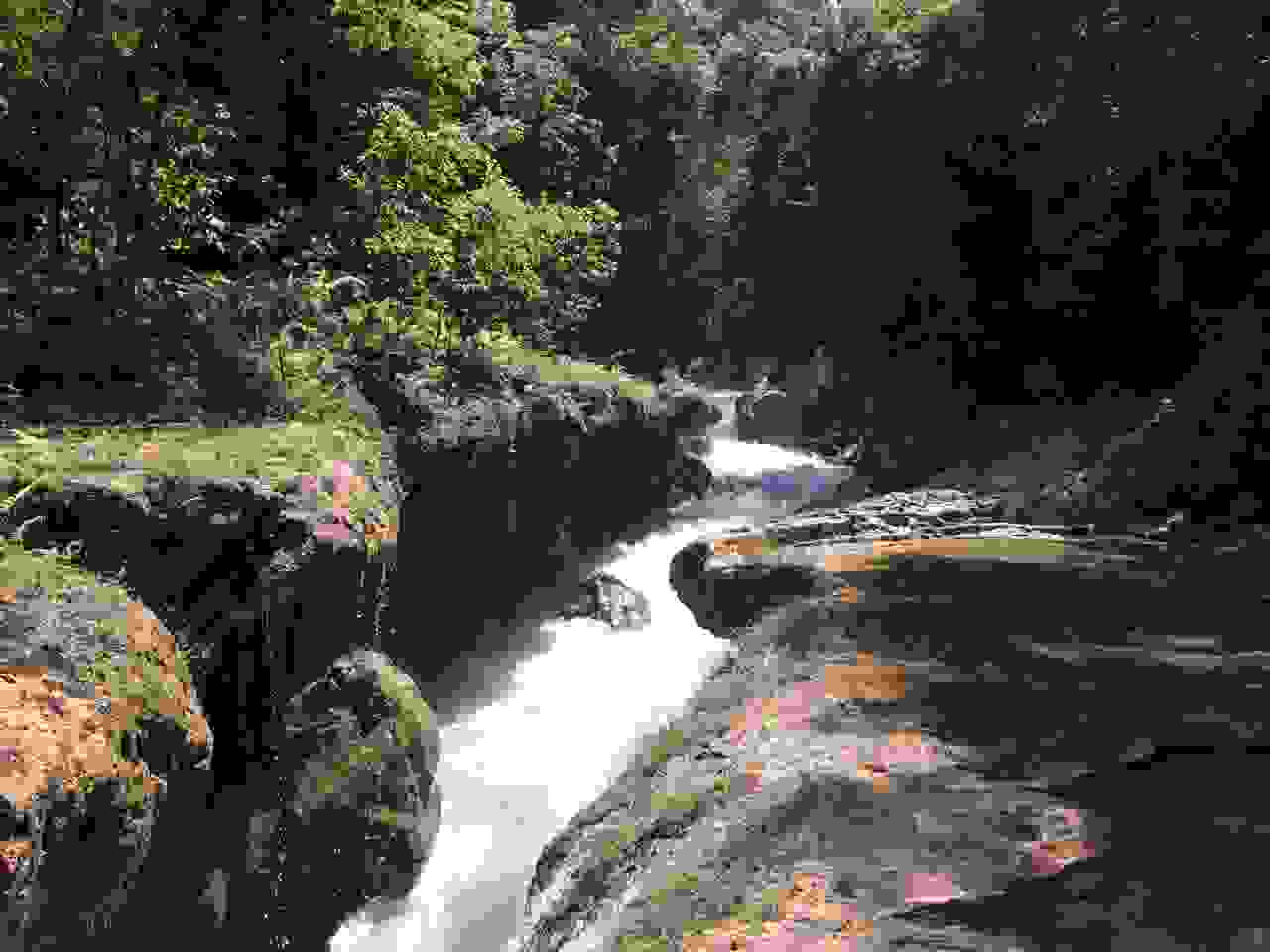
But aside from those, you might find yourself wanting to hike through the wilderness elsewhere. Bio reserves can be found in quite a few places, though the more accessible ones will likely be around frequently-touristed areas like Flores (the base camp for Tikal) or Antigua. The northwest of the country has some really remote jungle reserves, where you might see even more exotic wildlife, though it might be more difficult to organize a trip to the really remote areas.
10) Learn all about coffee
Alright, this may have been more for my dorky Seattlite coffee habit than anything else, but dammit, we drink billions of cups of coffee every day, and we might as well know a thing or two about it!
Like how coffee actually looks like this:

Wouldn’t have guessed that, would you?
It’s also ridiculously difficult to grow. They have to splice two different species of coffee plant together, combining tough roots with tasty-coffee-producing stems to get better flavor from a plant that won’t wither from disease, all hand-raised from birth in adorable little plastic bags:
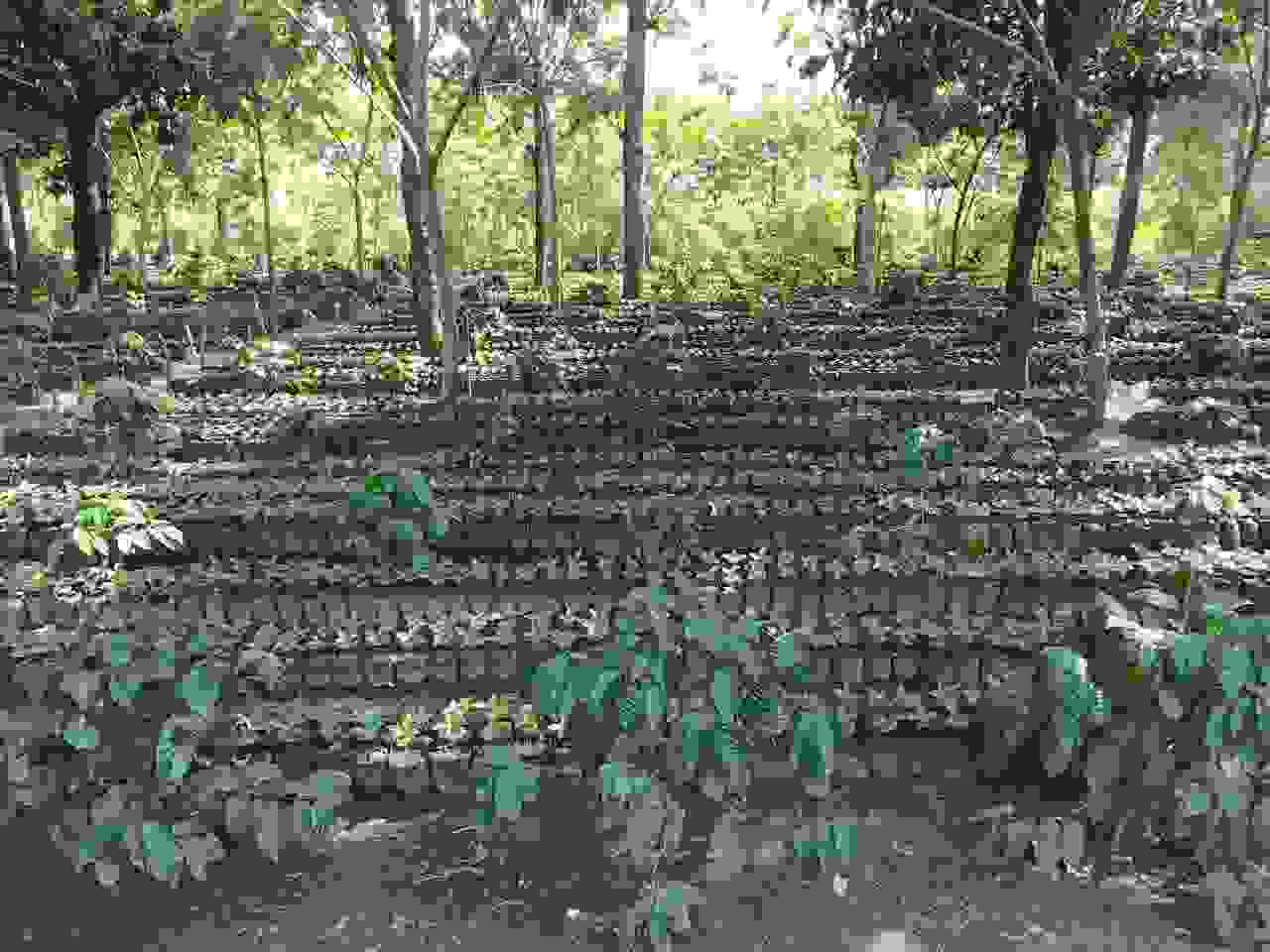
That was at the Dalton estate, a massive coffee-growing operation just outside of Antigua, which offers extraordinarily informative tours in both English and Spanish, and offers you a cup of some of the best coffee in the world to finish it off. I could have stayed there all day. Coffee is something we rarely think about, as it has become so conveniently available in drive-throughs everywhere, so it was great to get a closer look at how much effort goes into producing our daily mental fuel.
Guatemala is a great place to learn about coffee cultivation, as it’s home to some of the best coffee you can find, and quite a few places have learned that visitors love the tours just as much as the coffee, and are more than happy to oblige. Some of the more established producers have more organized options, while others are pretty much just a walk through a guy’s backyard while he describes how he grows coffee there. Both sound fun.
Difficulties you will face
Alright, so it’s not all rainbows and sunshine. Guatemala actually has a pretty shady reputation for street crime, though I found these rumors to be vastly overblown. Major improvements have been made in recent years, and a lot of those “you can’t go there without a police escort” places were in fact filled with families, with kids running around and enjoying themselves. It was all just fine.
No, it’s the buses that will ruin your day. Unless you’re willing to pay extra for a fancy air-conditioned bus with high-quality seating (and for any trip over a few hours, it’s worth considering), you’ll be stuck in a painfully uncomfortable, overfilled school bus whose seats have barely enough leg room to accommodate the average 12-year old, and about as much cushioning as a park bench. When you get off the main roads and start on those bumpy dirt paths, you’ll be jostled left, right, up, down, forward, and back, driving you insane on all three axes of discomfort. It’s going to be awful. Heat and humidity certainly don’t help either.

But that’ll be all. Aside from the difficulties caused by the underdeveloped road infrastructure, which gets washed out during the rainy season all the time, Guatemala’s a great place to enjoy all sorts of things, ancient and modern, natural or engineered. Oh, try to learn some Spanish, too. That’ll help.
It’s hard finding another tiny country as densely and diversely packed as Guatemala, and although some people rush through the major sites on their way through Central America, there’s plenty to keep you busy if you want to slow things down. So go and explore to your heart’s content.




This was a nice read, thanks!
Coffee.
You look at that little cherry & wonder who figured out that if you dry, roast (just right), grind & boil the PIT it makes a drink that not only tastes good (I like it) but gets you going. That’s a long string of events…..
The destination sounds …. trippy. I’m up for the Mayan ruins and the jungle! With the monkeys!!!
Hi, A few really amazing places I would recomend are the 10m waterfall park you can jump off of in El Petin and the hot spring waterfall just outside Rio Dulce and the crater lake an hour outside the capital. The hot spring waterfall is amazing!!!
Thank you for that trip down memory lane. My husband and I were in Central America for two months last year. We found that Jan.-Mar. was the ideal time to beat the rainy season, summertime heat and mosquitoes! We went to almost all the places you mentioned and enjoyed eating tapado (a big fried fish on top of stew), a delicious Garifuna specialty in Livingston.
A week before, an Antigua resident had told us how her friend was robbed on a bus from Guat City to Antigua. The thief would slide onto the seat next to the victim and push a weapon (knife?) against him/her and quietly demand money. We boarded a couple of crowded local buses and stood behind the driver. On one, a couple of local women came and stood behind us.
Just read your link to Anna’s blog about Antwerp. We’re planning on visiting Europe later this year and found more reasons to visit Antwerp besides a nearby 1600s copy of The Last Supper!
I am glad you seemed to overall enjoy your time in Guatemala. This article definitely touches on some great points about Guatemala for sure, but I felt the author was a little detached from trip. I went down to Guatemala for the first time in March 2010 and was essentially a tourist and ended up staying for over two years. There is so much to this country, it’s people and the culture. It’s hard to do it justice online. I hope more and more people go there and truly embrace it for what it and enjoy the ride!
Chelsea – La Gringa Chapina – http://www.lagringachapina.com
Chelsea, You are so right about the author. I read how he described my country and some things are right on point and others are not. Guatemala is a beautiful country and believe me that there are a lot more beautiful places to see and visit than the ones he mentioned. Thank you for pointing it out.. Hope you come visit Guatemala again soon..
She was right. There were some things going on in “real” life that were on my mind while I was there, so I wasn’t quite as immersed in what was going on there. I definitely had a good time, but I was mentally elsewhere sometimes.
Hi, I am going to Guatemala in Dec. We will go as a family of 4 (2 adults and 2 kids). I thought I would rent a car and travel the country hitting the major spots you advise. Would you suggest renting a car? Schlepping the family on buses doesn’t sound fun.
Thanks,
Beth
If you’re traveling with kids, I would definitely suggest going on the more expensive buses, or renting a car. They’ll just be going crazy on those bumpy rides in terrible mini-buses, and it’ll be a grueling ordeal instead of a fun trip. I have no idea how easy it is to rent a car down there, though, so I can’t help other than saying it’s probably a good idea.
Hi Beth
We are planning to go in Dec as well. Do you have an itinerary that you could share might help with our planning. We are so confused since we are also travelling with two kids
Let me know if you can help.
Aisha
Did you end up renting a car? How hard was it to get around? I’m thinking of making this trip, also with kids. Not sure if it’s a destination that would be too challenging to enjoy. We love hiking and being active. We don’t enjoy sitting on the beach so moving around would be important.
Thank you for a good read to overview your top experiences. My husband and I will be going for a month in a couple of weeks (we are traveling long-term and are in Mexico now) and your article will help give us a starting point to launch more detailed research based on what we are most interested in doing.
Very nice summary.
Great read! I’m planning to drive from LA to Patagonia in 6 months. Cramming Spanish and researching now. You’ve convinced me to plan for at least a week in Guatemala.
It’s pretty great. I really enjoy the ancient architecture, so it’s a must-see destination if that’s what you enjoy. Mexico has quite a few of those monuments too, but stopping in for Tikal certainly isn’t going to be regrettable.
Thanks a lot for the great post. Definitely learned about some great places I had not heard of before!